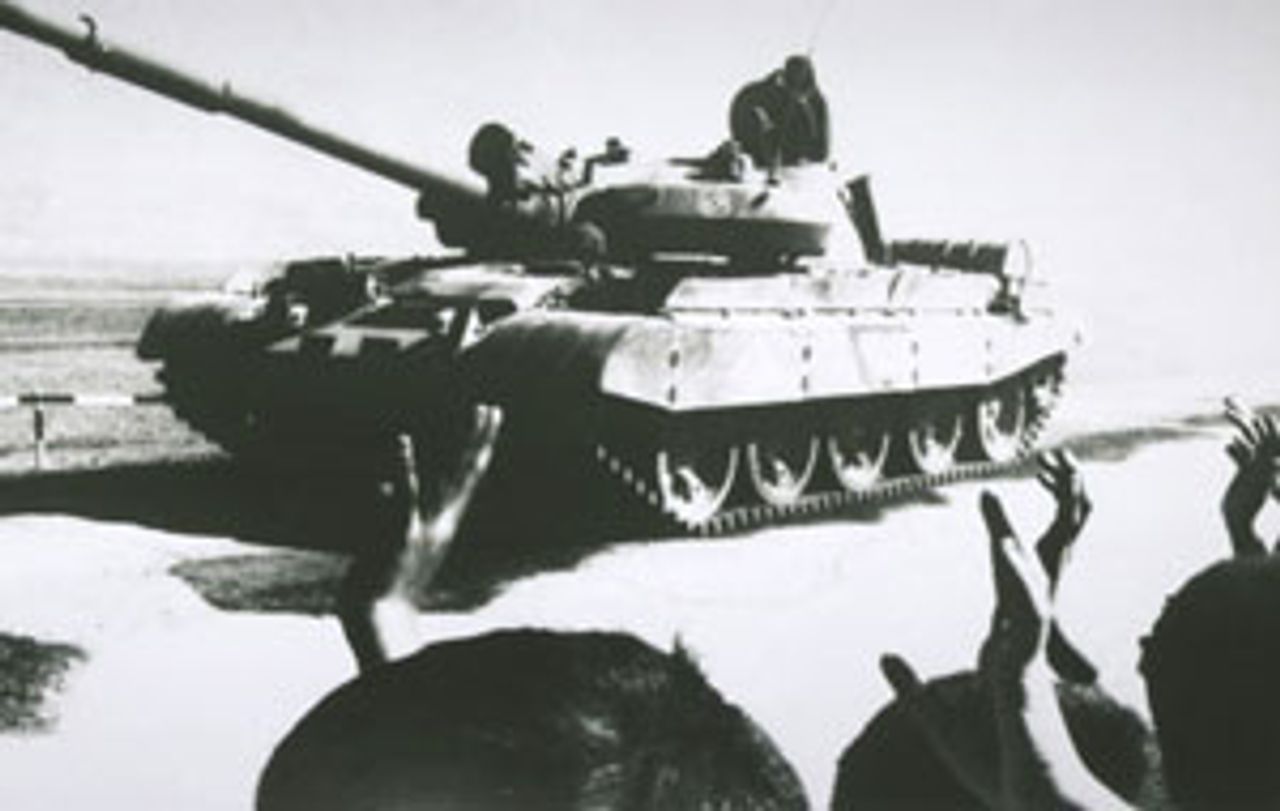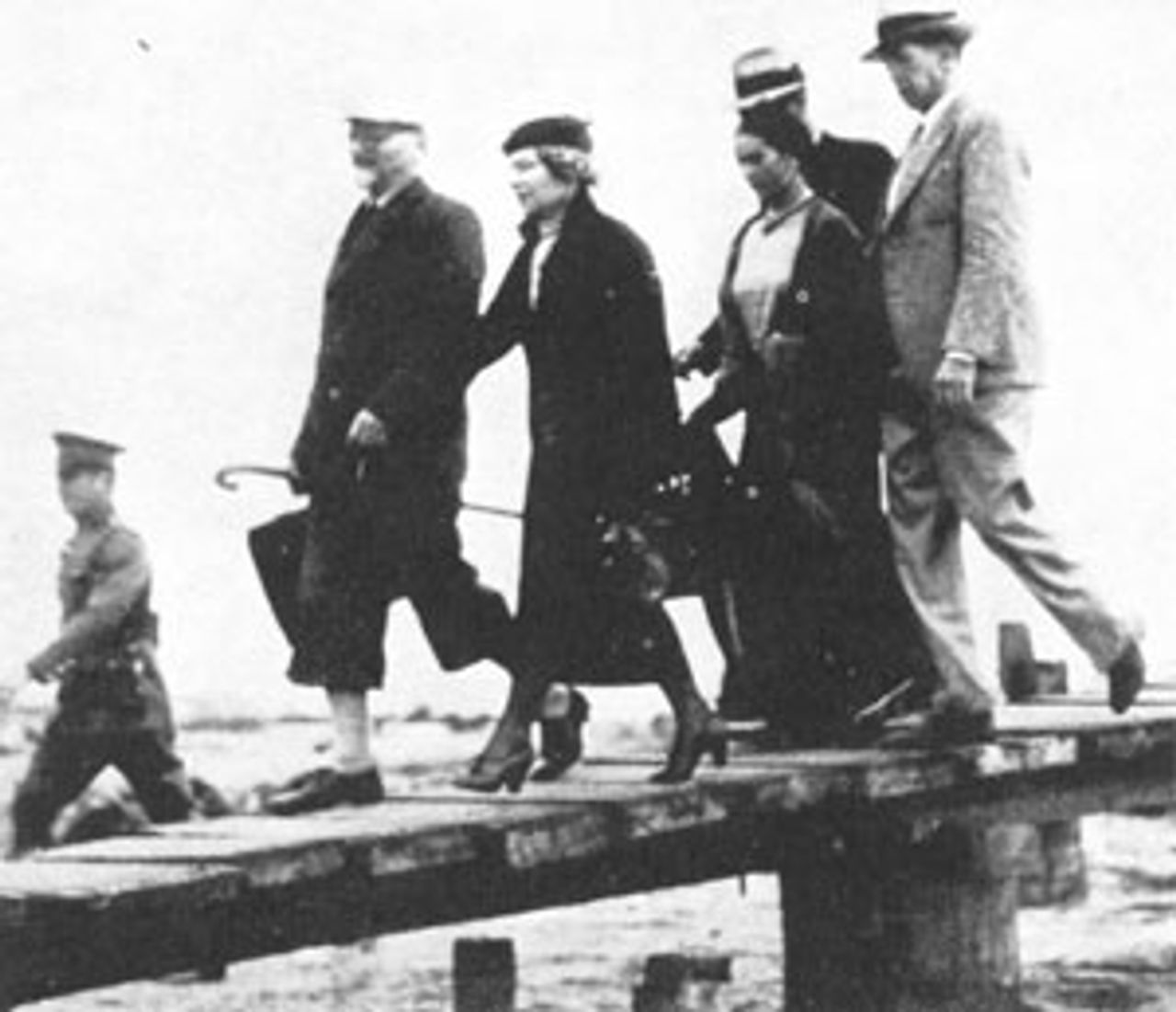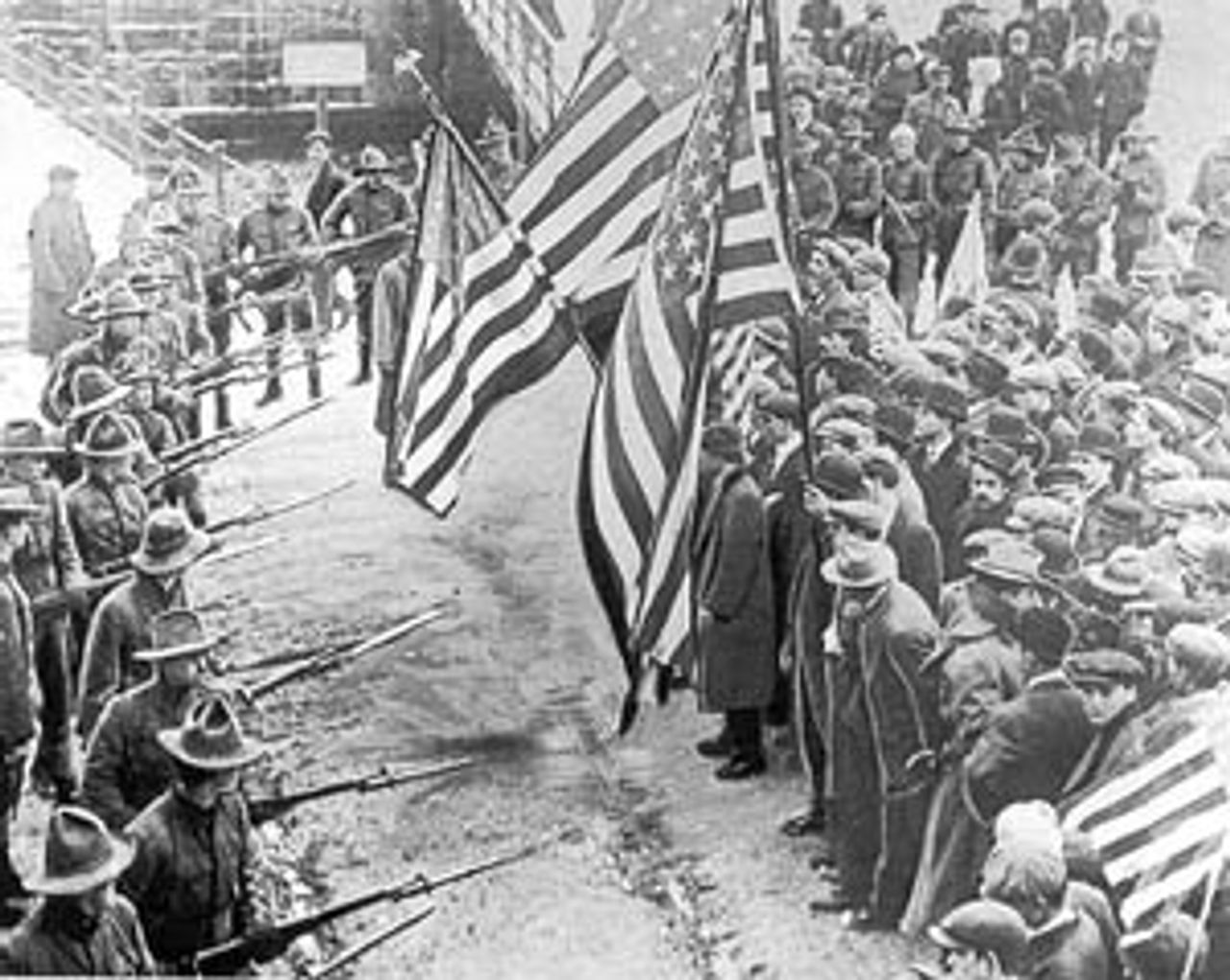This Week in History provides brief synopses of important historical events whose anniversaries fall this week.
25 Years Ago | 50 Years Ago | 75 Years Ago | 100 Years Ago
25 years ago: Soviet cease-fire in Afghanistan signals withdrawal policy
 Soviet T-62 main battle tank in Afghanistan
Soviet T-62 main battle tank in AfghanistanAfghan Communist Party (PDPA) leader Mohammad Najibullah announced a unilateral cease-fire by the PDPA government and the Soviet troops that supported it, to take effect January 15, 1987. This began the withdrawal phase of Soviet foreign policy, announced over five months earlier by Premier Mikhail Gorbachev.
The reactionary Soviet intervention in Afghanistan began in 1979 under Leonid Brezhnev. Over 100,000 soviet troops were involved in the bloody conflict, costing the lives of 25,000 Soviet soldiers and hundreds of thousands of Afghanis. By 1987, more than 3,000,000 Afghan citizens had been driven from their homes into Pakistani refugee camps, becoming the largest refugee population in the world.
The cease-fire was rejected by Afghan guerillas led by the mujahideen. Starting in 1979, US secret funding for the anti-Soviet opposition forces was steadily increased until it reached an estimated $40 billion. This included over 2,000 FIM-92 Stinger surface-to-air missiles.
Najibullah was the head of the Afghan secret police and in late 1986 became president of Afghanistan. He was personally responsible for the torture and execution of thousands of Afghans. The brutal methods of the PDPA regime and the Soviet invasion outraged masses of people in the Middle East and South Asia, providing fertile ground for intervention by US imperialism. The arming and political elevation of the mujahideen and its allies, including Osama bin Laden, was to have disastrous consequences.
Najibullah himself was tortured, murdered and hung from a traffic light by the Taliban in 1996.
50 years ago: US launches first combat mission in Vietnam
On January 12, 1962, the Kennedy administration launched the first large-scale US military operation in South Vietnam, where it was seeking to prop up the corrupt pro-Western regime of Ngo Dinh Diem against a popular insurgency coalescing around the National Front for the Liberation of South Vietnam (NLF). Dozens of US helicopters transported about 1,000 South Vietnamese government soldiers to a location not far from the capital, Saigon, where they routed an outmatched NLF force.
At a January 15 press conference, President John F. Kennedy flatly lied about the US mission in Vietnam. When asked by a reporter, “Mr. President, are American troops now in combat in Viet Nam?” Kennedy responded, “No,” and then took another, unrelated question.
Days earlier, the New York Times published an ominous article, “US Sees Vietnam Facing Long War,” based on interviews with a number of unnamed Kennedy administration officials. The article stated: “The struggle in South Vietnam—whose survival is viewed as crucial to the independence of other Southeast Asian countries— should not be viewed over a period of two or six months, according to sources familiar with the progress of the [White House] talks, but more in the pattern of the fight against Communist insurgents in Malaya, which lasted about ten years.” The officials asserted that the war could be waged by the Diem regime “without any large scale involvement of US combat troops.”
Another report in the New York Times estimated that the NLF, derogatorily called the Viet Cong, controlled 80 percent of the villages in the Mekong Delta just south of Saigon.
75 years ago: Trotsky arrives in Mexico
 Leon Trotsky disembarking freighter Ruth at
Leon Trotsky disembarking freighter Ruth at Tampico harbor with his wife and Frida Kahlo
The oil tanker Ruth carrying Leon and Natalia Trotsky arrived in Tampico harbour, Mexico on Saturday morning, January 9, 1937. The oil derricks in the harbour reminded the Russian couple of Baku on the shore of the Caspian Sea. But apprehensive of what might await them, the Trotskys, despite the threats of the Norwegian police commander on board, refused to disembark until they were met by friends.
Finally, a tug boat drew alongside the Ruth carrying Max Shachtman, an American supporter of Trotsky. Also onboard the tug were a Mexican general and assorted officials who carried a message signed by the country’s President, Lazaro Cardenas, welcoming the couple to Mexico.
During the journey, Trotsky had been prevented from accessing any news on current affairs and he listened intently as Shachtman informed the Russian revolutionary about world events since his departure from Norway in early December.
Close to noon, the tugboat, followed by another small boat full of members of the international press eager to interview Trotsky, docked on Mexican soil. Once ashore, Trotsky fielded questions concerning the Moscow trials for two hours.
Trotsky and his wife were warmly greeted by Frida Kahlo, attired in a native rebozo. Her husband, the muralist Diego Rivera, had personally petitioned Cardenas to grant the Trotskys asylum. Ill health prevented Rivera himself from welcoming the Russian couple to Mexico, but they would subsequently reside at his residence, the “Blue House,” in Coyoacan, a suburb of Mexico City.
After the news conference, the Trotskys and their entourage were driven to a local hotel. The vehicle belonged to the Tampico garrison commander, General Beltran, who had been given responsibility for the Trotskys well-being by President Cardenas. From the hotel, Trotsky sent President Cardenas a telegram expressing his gratitude and pledging to honour the terms of his stay in the country. Cardenas had set one condition on Trotsky’s asylum, forbidding him from seeking to influence internal Mexican politics.
At eleven o’clock that evening, the El Hidalgo train arrived in Tampico station. Onboard was the acting secretary of the American Committee for the Defence of Leon Trotsky, George Novack. Also onboard were a lieutenant colonel and a captain of the regular Mexican army, who, together with a contingent of soldiers, had been dispatched to protect the Trotskys. Leon Trotsky and Natalia, together with Novack, Shachtman and Kahlo, boarded the train bound for Mexico City. The train, which had been used by the previous Mexican president, Pascual Ortiz Rubio, was manufactured with bomb-proof plates and bullet-proof windows.
100 years ago: The Lawrence textile strike begins
 Massachusetts militiamen with fixed bayonets
Massachusetts militiamen with fixed bayonets surround a parade of peaceful strikers
Textile employers in Lawrence, Massachusetts cut wages on January 12, 1912, sparking a mass walkout. The wage cut followed the enactment of a law by the Massachusetts legislature reducing working hours from 56 to 54 hours a week.
The textile mills affected by the strike included Wood Mill, the world’s largest, which largely employed immigrants. Poverty wages as low as nine cents an hour condemned workers to live in squalid tenements, where infant mortality was among the highest in the country.
As the employers declared the walkout to be a riot, the strikers called on the assistance of the revolutionary syndicalist Industrial Workers of the World (IWW). Led by organiser Joseph Ettor, the IWW unified the disparate nationalities and won the allegiance of 10,000 workers, undercutting the conservative American Federation of Labor (AFL). Ettor and a fellow organiser were promptly framed up and imprisoned.
Ettor’s place was taken by IWW leader “Big Bill” Haywood, assisted by Elizabeth Gurley Flynn and Margaret Sanger, who coordinated fundraising throughout the American working class. The strike lasted 63 days, with daily meetings of strikers, soup kitchens that fed the thousands on strike, and mobile mass pickets.
The mill owners fought back, utilising the state militia against the workers. Two strikers were killed and hundreds arrested in bitter daily confrontations. On February 24, the militia attacked and battered a group of mothers and their children gathered at the Lawrence station. The ensuing scandal led to a congressional hearing where strikers, including child labourers, gave grim evidence of slave-like factory conditions.
On March 14, Haywood announced the capitulation of the employers. The settlement included pay rises of between 5 and 20 percent, overtime payments, and promises of no discrimination against strike leaders. The Lawrence strike opened the way for pay rises across Massachusetts for 300,000 mill workers.
